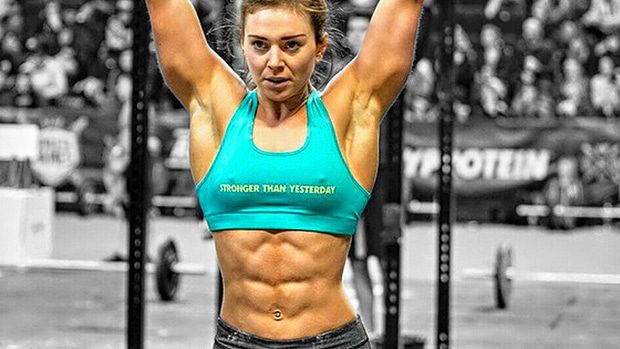It took many years for the functional fitness community to stop chastising those wanting to train their abs.
The belief was that abdominal training was not functional, nor a compound movement. Conventional wisdom in the CrossFit community, therefore, rendered abdominal work useless.
In the earliest editions of the CrossFit Journal, Greg Glassman was famous for saying squats were the best way to get strong abs.

Fast forward a few years to CrossFit as a mainstream fitness routine, and the taboo surrounding working your abs has mostly disappeared.
Don’t get me wrong, squats will make your core strong. But that answer isn’t what everyone is looking for.
If your goal is to train your abs more, or you’d like to do more core training to become a better athlete, this guide is for you.
We’ll walk you through the Ab and Core workouts first, and then the importance of training your abs, how a strong core will benefit you in CrossFit, and finish with recommendations on how often you should train.
Related: Top 5 Best Sit-up benches for ab workouts
Ab Exercises
Ab Wheel Roll Outs

These movements are similar, but your gym may not have ab wheels (get one here) for you to use.
Get an ab-mat to rest your knees on, and load a barbell with 15lb bumper plates (note: some 10lb bumper plates are too thin and will bend, which is why I recommend 15lbs).
Read Also: Best CrossFit Bumper Plates For Your Home Gym
Place hands on the bar with your press grip. Lock your elbows and hips out, and roll forward. If your hips break, you are no longer doing the movement.
Roll out the bar as far as you can with the goal of having your face about 3 inches from the ground.
If you can’t go that far, simply roll out to a distance you can manage, and progress it by a few inches next time.
Sets of 6-12 work great here.
Read Also: Best Adjustable dumbbells for home workouts
Hollow Holds
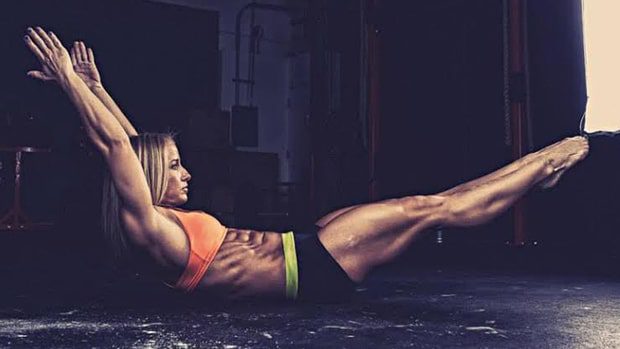
Isometric abdominal work is popular in CrossFit because many movements require us to brace our core.
Hollow holds are one of the most popular ab exercises to achieve this, by far.
The key to a good hollow hold is to tack your ribs to the floor while laying down, extending your arms and legs in the progress. If your rib cage flares out, reset.
Time these, aiming for sets of 10-45 seconds. Add 5-10 seconds each time you progress or superset them with another movement.
Read Also: Build full body functional strength with these sandbag workouts
Arch Holds (Supermans)
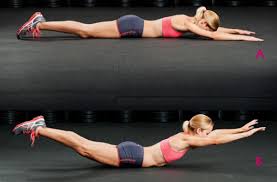
The reverse of the hollow hold, you perform an arch old by lying on your stomach. This exercise will strengthen your lower back and abs.
If I told you to make your body look like Superman, what would you do? You’d extend your arms in front of you, and your legs would rise up off the ground as if you were flying.
Your hips and belly would be the only points of contact on the floor.
Time these, aiming for sets of 10-45 seconds.
Add 5-10 seconds each time you progress or superset them with another movement. Hollow holds make a great super set.
Related: Change up your routine with these CrossFit Swim Workouts
GHD Sit-Ups

This movement is debated by many, but it still comes up in CrossFit WODs.
It will benefit your performance- and make the exercise safer- if you practice them on your own time.
Be sure to set the pins where you lock your leg in so they match your height. You want your butt to be right at the edge of the cushion with straight legs.
Reach behind you, touching the ground with the back of your palm.
Flex your quads as you return to the top, touching the cushions where your feet are locked in. Done correctly, your hips will do a lot of the work.
There have been some horror stories with athletes performing the GHD sit-up, so progress slow. Either do small sets or limit the range of motion until you feel comfortable doing the full GHD sit-up.
Sets of 3-10 are a good place to start. Limit these to 2-3 sets at the beginning to prevent incredible soreness.
Read Also: Top 3 GHD Machines Reviews
V-Ups
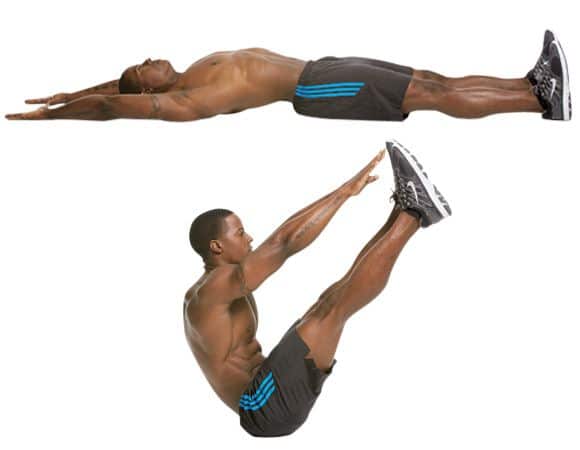
Start in the same position as as a hollow hold, arms extended behind your head, with your legs extended and off the ground.
The goal is to perform a “crunch”, bringing your hands to your feet in one fluid motion. At the top of the movement, your body will look like a V from the side.
Keep tight between reps, and don’t let your hands or feet touch the floor.
To modify this movement, begin by reaching your hands for your knees or shins. The straighter your legs are, the more difficult V-ups will be.
Sets of 10-25 will be good to start off.
CrossFit Ab Workouts
Here are 33 routines you can implement at home, after a WOD, or really, anytime. They take less than 10 minutes and will increase your abdominal strength.
Triplet
Pick 3 movements: one really challenging ab exercise, one moderately difficult exercise, and one ab exercise that will allow you “recover” slightly.
Assign reps or time to each movement, pick the number of rounds you’ll do, then perform the triplet for time.
As a guideline, the really difficult exercise should be the shortest (ex. GHD sit-ups), the moderate exercise (ex. Hanging knee raises) should take the longest, and the recovery exercise (ex. plank) should be somewhere in between.
Try this one out:
3 Rounds For Time:
- 5-10 GHD sit-ups
- 15 strict hanging knee raises
- :30 second plank
Mini-Chipper
The goal of any Chipper WOD is to ‘chip away’ at a large amount of repetitions, performing smaller sets until you reach the desired number. Apply this to your ab work.
Try this “Filthy 50″ Style Ab Workout, for example:
For Time:
- :50 second hollow hold (stop clock when you rest)
- :50 second arch hold (stop clock when you rest)
- 50 abmat sit-ups
- 50 V-Ups
- :50 second plank
Log the time, and try to beat this once a week.
Superset with Compound Lifts
One great way to strengthen your core and improve your performance is to perform abdominal exercises immediately after a compound lift.
Pair the two exercises and you are sure to get a great workout.
The bracing nature of the squat and deadlift make both lifts a perfect fit for auxiliary core work. Try this routine:
Every 2:30 for 7 sets:
- 5 Squats or Deadlifts (60-70% of 1RM)
- 15 kettlebell sit-ups (place kettlebell overhead or on chest)
https://www.instagram.com/p/BZbmiXDBl5Y/?utm_source=ig_embed
Why Is Ab Training Important?
Now that you have the workouts, lets talk about why Ab and Core training is so important.
Every movement in CrossFit requires a strong core.
This is true whether you’re lifting a barbell during a squat or deadlift, doing kipping pull-ups, or knocking out push-ups.
Your core is the start of all movements. You couldn’t squat, press, clean or run without tension in your abs and lower back. Your spine couldn’t support itself.
Read More: CrossFit Conditioning – Why You Need It, And How To Get It
Human movement starts from the midsection, so anytime you work your abdominal muscles a little extra, you will improve performance.
It might not show up after one workout, but results will come over time.

Dan Bailey Performing Isabel at The CrossFit Games
Benefits of Having A Strong Core
The benefits of having a strong core can be categorized into three sections: performance, health, and psychological
Performance
A strong core will translate into stronger pulls, pushes, lifts, and squats. All human movement, CrossFit or otherwise, starts from the midsection.
You wouldn’t be able to even walk without your core muscles doing their job, so it’s important to strengthen the muscles that start it all.
CrossFit is a game of being good at everything, not great at one thing.
Ab exercises carry over to performance gains in all CrossFit movements, so you can’t really afford to not be doing some form of abdominal training.
Read More: Everything You Need To Know About CrossFit Accessory Work
Health
Because of the high carryover to performance and sport, ab work improves longevity in the gym. It. A strong midsection offers balance and stability to your body.
Ab work can help maintain a healthy spine and strong lower back.
Ab work keeps you in the gym and able to train. No matter who you are, that makes it worth doing.
Read More: 6 Tips To Improve The Overhead Squats So You Can Lift More Weight
Psychological
This is a real benefit, even if it’s the less talked about perk of abdominal training of the three. To some extent, ab work is still trying to shed it’s taboo in the functional fitness community.
There’s a psychological benefit to having a strong, good looking core. Much of the community has made it past pretending that looking good is important, and you should too.
If looking good matters to you, it’s important. When you’re happy with how you look, you are a healthier person and can perform better.
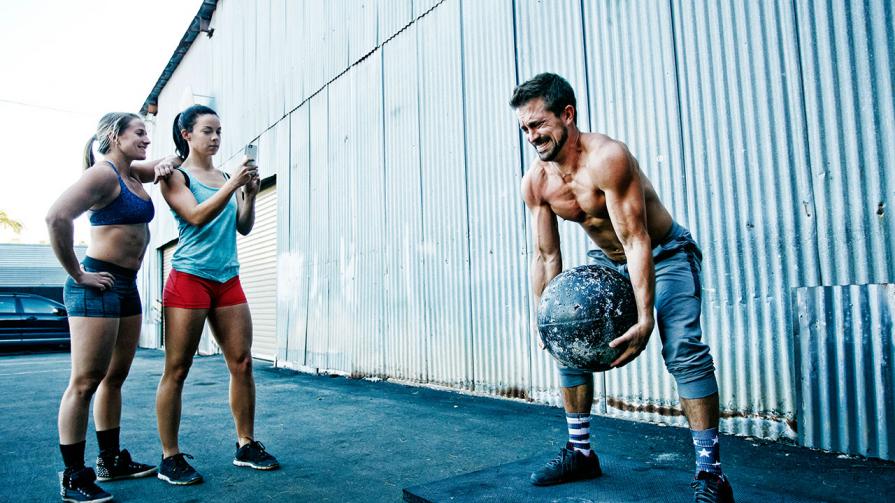
How Often Should You Train Abs
Guidelines
This is the million dollar question for CrossFit athletes wanting to do extra ab work.
“How much ab work can I do?”
Anytime you add to an already existing program, the goal should be to find balance.
Find a way to make the new small piece fit into the whole puzzle, and you’ll reap the rewards of extra hard work and well thought out programming.
Take these guidelines to heart when adding extra ab work to your routine:
- Don’t do so much ab work that you have to go lighter than normal during heavy lifts.
- Don’t do so much ab work that you’re too sore to do WODs.
- Do enough ab work to challenge yourself.
- Progress your ab work each session, even if it’s just a little bit.
Remember CrossFit is about performance, not looks. Too much vanity work means you are no longer really training for CrossFit.
There’s nothing wrong with others forms of exercise like bodybuilding; they are just different. Know what you want to achieve from doing abdominal training.
As the old saying goes, form follows function. You can perform well and look good at the same time, just make sure your priorities are straight.
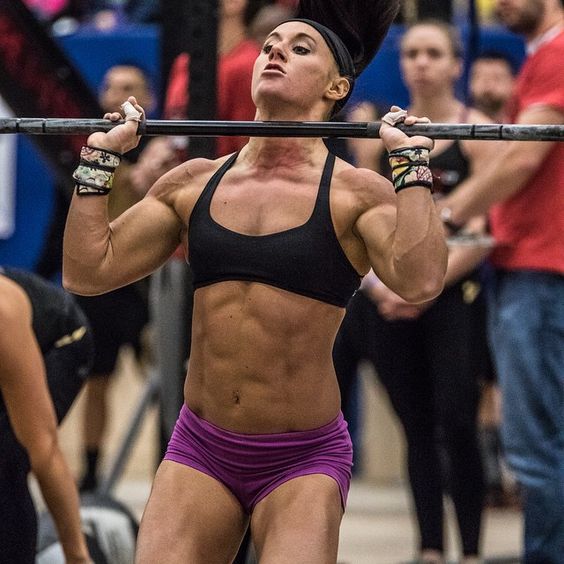
Days Per Week
If you follow the guidelines above, you can train abs every training day.
This is assuming you’re striving for balance with your programming and not obsessing over having a 6-pack. That won’t happen without a heavy emphasis on improving your diet, anyway.
If every day is too much, you might also consider ab work a part of your weekly routine, adding it in on certain days.
Do 5-10 minutes of abs after every lower body lift day (ex. squat, deadlift) as accessory work for the main movement.
In this case, 2-3 days per week before or after a workout are appropriate.
You’ll find example exercises and regimens below to help you get started.
Wrap Up
If you’re looking for a reason to do abdominal work, remember that all human movement begins in the midsection.
Whether your goal is to increase performance, get healthy, or look good with your shirt off, that can be achieved by adding in auxiliary core work.
The taboo of ab work is slowly fading from the functional fitness community.
Focus on the positive aspects of extra core work, and don’t feel bad for wanting what you want from your CrossFit routine.
The performance benefits far outweigh any silly stigmas of abdominal exercises!

